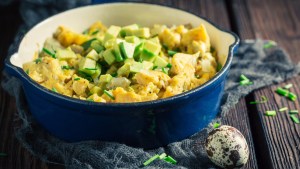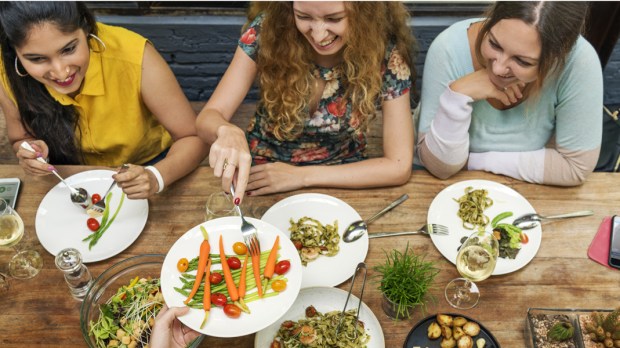It’s that time of year again … time when many of my clients worry about losing weight for the beach, and also time when I need to remind them not to stop eating. Yes, believe it or not, cutting calories is not the answer to looking and feeling good in your swimsuit. You actually need to eat more to get leaner.
I know … it doesn’t sound like it works. But trust me on this. We retain fat by eating too little. Our smart bodies and minds worry that we’re starving it, so it goes in to fat-saving mode, rather than burning it.

Read more:
Here’s the daily meal plan of a busy nutritionist mom
It doesn’t take long for our metabolism to slow down. As a matter of fact, it can happen in a few short days of under-eating. Once metabolism puts on its brakes, you start retaining fat in those trouble spots that always seem to store fat more than others, like the belly for most people. When we restrict calories to try to achieve our weight loss goals, we actually just become smaller, fat-storing versions of ourselves.
For example, if your arms are always your body’s lean spot, and your midsection is always the place that tends to accumulate fat, that’s not going to change; your arms will still remain lean, while your midsection stores up more fat. Your body composition will likely stay the same, or even worsen, in your trouble spots, even if you’ve lost weight. By eating the right amount of foods and combinations, we’re actually targeting our troubled or fattier areas, not making them worse.
Take me for example: I’m a 32-year-old woman. I’m 5’8’’ and 142 lbs. I need to eat about 2,000 calories a day to be properly fueled and burning fat. Being at the right calorie range means I will be fueling my body with the energy it needs to take on the day. Since telling you how many calories you need is vague and unhelpful, here’s a good way to break it down for yourself:
I teach that of those 2,000 calories per day, 50 percent of them should come from carbohydrates (fruits, honey, oatmeal, rice, quinoa, corn, veggies like sweet potatoes), 25 percent from fat (avocado, seeds, nuts, oils), and the last 25 percent from protein (chicken, turkey, yogurt, eggs, cheese, seeds). That breaks down to 1000 calories coming from carbs, 500 coming from fat, and 500 coming protein.

Read more:
How to love the body God gave you, even in a swimsuit
When I’m under eating, it’s crazy how noticeably cranky I get, and how little energy I feel when I’m going about my day. Motivation and energy for exercise? Forget it. The worst part is my body shows it, too. I can literally feel my belly muscles going away and my legs getting thicker. This is because I’m losing muscle while my metabolism is slowing because my body is worried about storing fat for the future. It taps into my muscle storage for fuel.
So how do you make sure you are getting enough calories from each of the four food types? Here’s where it gets tricky: we measure our food in grams for the most part. Each gram of protein and carbs contains 4 calories, while fat is much more nutrient dense, so it has 9 calories per gram. If you’re still following me, let’s talk about the breakdown of how many grams of each macronutrients you would need at my size:
250 g carbs
125 g protein
50.5 g fat
Doing the math all day long can be exhausting; eating right does take some planning but there are some simple tips to help you keep your calories up:
1. Start eating within the hour of waking up … just coffee doesn’t count!
2. Always pair your carbs, whether they are grains or fruits or veggies, with healthy fat and lean protein.
3. Eat every 3 to 4 hours and keep the meals and snack calories consistent. So for 2,000 calories, like I eat, I try to eat 400 of them at every meal and snack.
Life goes by fast and it’s hard to keep up, but if you really want to look and feel your best, eat more! Just make sure it’s the right combination of good foods and at frequent intervals.

